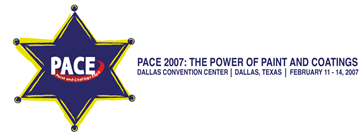Search
Products tagged with 'experimental testing'
View as
Sort by
Display
per page
New Reactive Diluent to Reduce the VOC Content of Polyurethane Acrylic Coatings
Product Number:
51217-050-SG
Publication Date:
2017
$20.00
Novel Raw Materials for Enhanced Polyurea Coatings Performance
Product Number:
41207-388-SG
Publication Date:
2007
$20.00
Polyether Polyols: A Renewably Sourced And High Performance Ingredient For Coatings
Product Number:
41211-654-SG
Publication Date:
2011
$20.00
Pull-Off Adhesion Strength Testing of Lining Systems on Concrete: A Review of the Various Direct Tensil Test Methods Used for Severe Service
Product Number:
41216-992-SG
Publication Date:
2016
$20.00
The Challenge of Balancing Adhesion and Corrosion Resistance in Waterborne Styrenated Acrylic Direct to Metal (DTM) Resins
Product Number:
51217-034-SG
Publication Date:
2017
$20.00
The Use of VCI Inhibitors in Conjunction with or Replacement of Traditional Corrosion Inhibitors
Product Number:
51219-176-SG
Publication Date:
2019
$20.00
Zero VOC Water Based Epoxy Topcoat - Performance Equivalent to Solvent Based and High VOC Water Based Epoxies
Product Number:
41208-463-SG
Publication Date:
2008
$20.00







